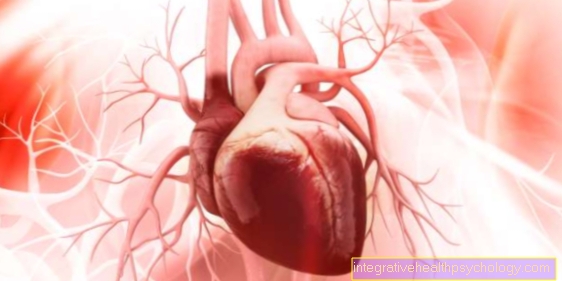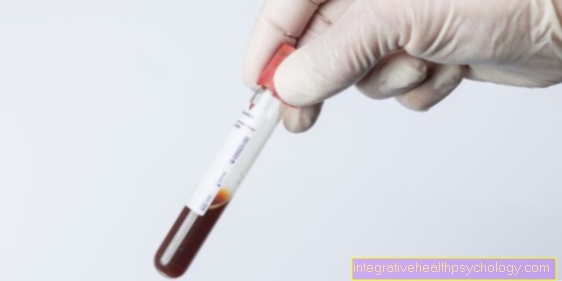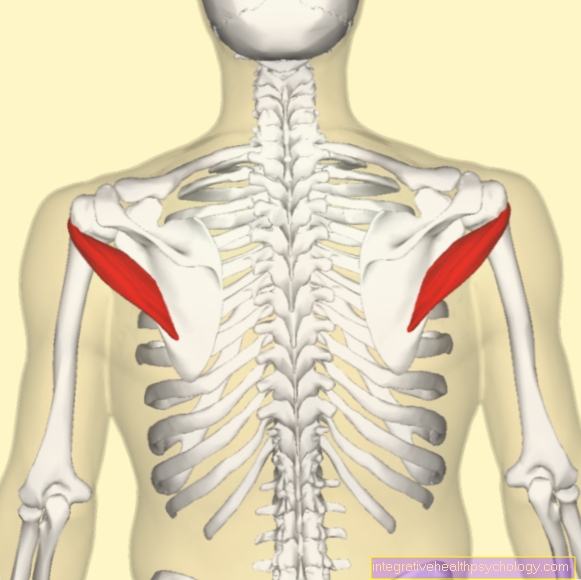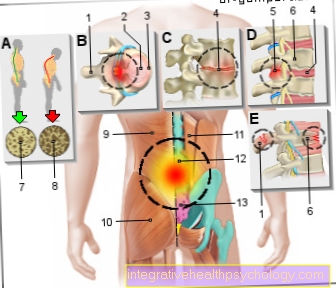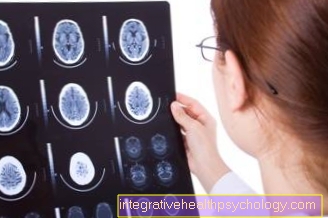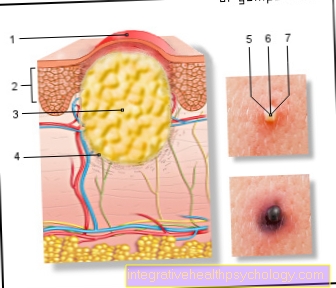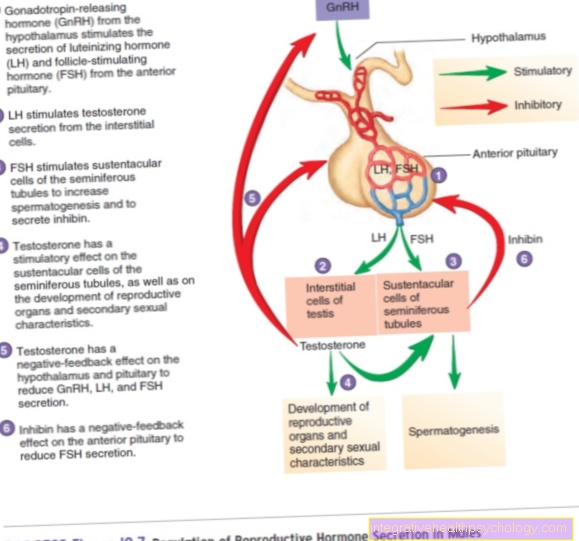Recognize and treat mineral deficiencies
introduction
Minerals are substances that have to be taken in with food, as the human body is not able to produce them itself.
They are important to ensure the metabolism and can be divided into trace elements such as iron, iodine, copper and zinc and into bulk elements such as sodium, calcium, potassium and magnesium.
A lack of minerals can be caused by a reduced intake or by an increased need.

What do you need minerals for?
The outstanding role minerals play in a balanced homeostasis can be seen in the consequences of an insufficient supply.
The trace elements, the first subgroup of minerals, include iron, iodine, copper and zinc.
Iron should be adequately supplied to the body because it is essential for the formation of hemoglobin, the blood pigment in red blood cells.
The iodine, on the other hand, forms the most important building block in the metabolism of the thyroid gland in that it is used for the production of the two thyroid hormones triiodothyronine and thyroxine (T3 and T4). Copper is directly related to iron metabolism. It is required both for the absorption of iron in the small intestine and for the functional utilization of iron.
The zinc is involved in the regulation of the immune system by strengthening it on the one hand by activating the immune cells and on the other hand protecting the body against an excessive inflammatory reaction through negative regulation. It is still the subject of current research, as the exact cellular processes have not yet been deciphered.
The quantity elements, the second subgroup of minerals, include e.g. Sodium, potassium, calcium and magnesium.
As an ion, sodium plays a key role in regulating the exchange of water between the inside and outside of the cell. It is also involved in the development of action potentials in the nerve cells, i.e. the conduction of excitation in nerves, and drives further transport processes across membranes. Potassium is present inside many body cells and is important for repolarization, i.e. the discharge of action potentials of the nerve cells.
Another important ion is calcium, which, at around 1 kilogram, is the most abundant mineral in the body. It takes on important tasks in bone metabolism, in which it forms a calcium phosphate complex together with phosphate and is the basic substance of the bone. Calcium is also involved in the transmission of neuronal signals to chemical synapses and coagulation processes.
At 24 grams, magnesium is the least strongly represented mineral in the body and the opposite of calcium.
Please also read the topics:
- Recognizing a potassium deficiency
- Magnesium deficiency
- Iodine deficiency
- Zinc deficiency
- Is aluminum toxic to the human body?
Causes of a mineral deficiency
The causes of a mineral deficiency are very diverse and can be associated with time-consuming, very detailed medical diagnostics.
One always has to differentiate between a self-caused deficiency due to insufficient absorption and a deficiency which comes about due to utilization disorders in the body. As a possible cause of a mineral deficiency, an increased need dependent on age or environmental factors must always be considered. The most common causes of mineral deficiency diseases are listed and explained below:
- Iron deficiency due to the loss of blood during menstruation
- Loss of table salt (NaCl) through profuse sweating (e.g. during exercise)
- Diarrhea and vomiting with impaired absorption of substances through the intestinal mucosa and loss of ions
- Stomach and intestinal diseases with impaired absorption of substances through the intestinal mucosa
- Alcoholism and liver synthesis disorder
- Impaired kidney function with loss of urine
Iron deficiency
Manifest iron deficiency is the most common mineral deficiency worldwide.
It can include a manifest iron deficiency can result from reduced intake through food. This happens in people who are strictly vegan or who find themselves in emergency situations with a generally reduced food intake. However, iron deficiency also often affects young women who lose a lot of blood during their menstruation.
An undersupply can, however, also occur as a result of insufficient absorption by the body ("malassimilation"). The causes here are a gastric dysfunction e.g. after gastric surgery, chronic inflammatory bowel diseases such as Crohn's disease or gluten-sensitive enteropathy.
Pregnant and breastfeeding women, for example, have an increased need for iron.
Iron deficiency often manifests itself quite unspecifically through tiredness and poor concentration. Those affected are also often more prone to infections and complain of sleep disorders. It also leads to anemia due to the reduced formation of hemoglobin, the red blood pigment.
Ferrous foods like meat, legumes, pumpkin seeds, and nuts can help prevent this.
Read more on the topic:
- Symptoms of iron deficiency
- Iron Deficiency Test
- Iron Deficiency and Depression - What Is the Connection?
Sweating as the cause
When exercising, the body loses not only body water but also important minerals. These are mainly sodium and chloride in the compound NaCl (table salt). Sodium chloride transporters are located in the glandular ducts of the pores (sweat glands), which means that the body can lose large amounts of these two important minerals. Here it is important to compensate for this loss by drinking a large amount (on hot days and excessive exercise up to 5 to 10 liters) and isotonic drinks.
Among other things, in cystic fibrosis, an increased amount of sodium chloride is excreted in the sweat. This can be used in the diagnosis of this genetically inherited disease by testing the sodium chloride content in sweat. Cystic fibrosis has been recorded in newborn screening since 2016.
Which accompanying symptoms indicate a mineral deficiency?
Other symptoms that frequently appear in the case of a mineral deficiency are failure to thrive, concentration disorders, sleep disorders, nerve and muscle weakness, coagulation disorders and anemia. A twitching eyelid can also occur.
Coagulation disorders can occur with a vitamin K deficiency as well as with a calcium deficiency. Vitamin K plays an important role in the synthesis of some coagulation factors (2,7,9 and 10) in the liver. A lack of vitamin K can therefore include bleeding complications occur. In the optimal case, there is a balance of thrombus formation and dissolution in the vascular system. Thus there is neither thrombus formation nor bleeding. Calcium is released by the thrombocytes ("blood platelets") during the coagulation process and contributes to the fact that these accumulate and attach to the vessel wall. This process can be suppressed with a calcium deficiency.
In the case of anemia, iron deficiency should be mentioned as described above. Iron deficiency anemia is the most common form of anemia with 80% and is above all very well represented in developing countries.
Hair loss
Like the other hair cells, the hair root cells need some essential minerals for their daily metabolic processes.
In addition to the genetically caused hair loss type, the mineral deficiency-associated hair loss is one of the acquired causes. The most important minerals for healthy hair growth are calcium, zinc, selenium and iodine. Calcium plays a key role in hair growth. It stimulates growth in the proliferation zone in the hair root. Foods containing calcium include milk and dairy products, nuts and almonds, sesame and flaxseed, Chinese cabbage, kale, and spinach.
Read more about this: Hair loss
Tooth structure problems
Calcium also plays a decisive role in the formation of tooth enamel and the formation of a healthy tooth structure. Nevertheless, adequate dental hygiene should be referred to as the primary prevention of diseases such as tooth decay.
Cardiac arrhythmias
Above all, potassium plays a very crucial role in cardiac excitation.
This is done e.g. also useful for heart operations. With potassium-rich solutions (cardiac care solutions), cardiac arrest can be achieved and, by using a heart-lung machine, you can operate very precisely on a non-beating heart.
An increased or decreased potassium concentration has a pathological influence. Hyperkalemia (from about 5.5 mg / dl) can lead to life-threatening cardiac arrhythmias with subsequent cardiac arrest. Hypokalaemia (<3.5 mg / dl) also has a negative impact on cardiac excitation. The ECG shows a T- and U-wave flattening.
But it is not only the strong influence on the heart that takes up potassium for itself. A disturbance in the potassium balance can include also lead to a weakening of the muscular reflexes, a general muscular adynamia, i.e. exhaustion of the muscles, and paralysis of the smooth muscles with the following constipation including paralytic ileus (intestinal paralysis), bladder paralysis with overfilled urinary bladder.
Nail changes
Minerals also play an important role in nail formation.
Onychoschisis, for example, a lamellar chipping of the nails starting from the edge of the wall, can be the result of an iron or vitamin deficiency. A mineral deficiency also seems to be a possible cause of onychorrhexis, the fragmentation following the longitudinal axis of the nail. The reason for generally brittle nails can be a calcium deficit.
Read more on the topic: Brittle fingernails
therapy
In order not to get into the situation of a mineral deficiency in the first place, it is important to take in sufficient quantities with your food.
The framework for this is provided by certain foods such as vegetables and fruits in a variety of ways as well as 1-2 fish dishes per week. A restrictive diet with regard to red meat and sausages also favors a balanced mineral balance.
When using table salt, reference is made to iodized and fluorided salt. Above all, fatty foods should be avoided. A sufficient amount of drinking water containing electrolytes is also very important.
However, if there is a manifest mineral deficiency, several therapy options are available. Basically, the individual diet should be reconsidered and adjusted if necessary. External intake in tablet form (orally) is also possible. This form of therapy represents an important pillar in the therapeutic approach for the treating physician.
Two methods should be mentioned in "home medicine". The absorption of Schüssler salts has been a well-known process for decades. Twelve different salts and 15 supplements can be taken in here. In addition, drinking a glass of water with two tablespoons of apple cider vinegar and one teaspoon of honey should prevent mineral deficiencies.
Read more on the topic: Healthy eating
diagnosis
Usually unspecific symptoms lead the patient to the doctor. These are feelings of exhaustion, tiredness and a decline in performance.
The attending physician (usually an internist specialty) then generally creates a blood count after a venous blood sample has been taken. The electrolyte concentrations in the blood can be determined using specific laboratory chemical methods and, if necessary, targeted treatment can be initiated promptly. It is always important to look at the clinical symptoms together with the laboratory findings.
In addition to the blood analysis, a mineral deficiency can be detected with various other methods, which, however, are less reliable from a medical point of view.
forecast
Even if a mineral deficiency brings with it a variety of physical symptoms that must be taken seriously, it can usually be remedied well after the balance sheet and therapy have been carried out.
It is important to combine these symptoms into a possible deficiency in one or more minerals. In this case, additional therapy can be started as soon as possible. A reduction in physical symptoms can usually be achieved with optimal treatment. Thus, the mineral deficiency usually represents a reversible clinical picture.
Purely physical causes (such as malassimilation due to inflammatory bowel disease, etc.) can also be treated with substitution therapy or, if necessary, with interventional procedures.
Summary
In addition to proteins, carbohydrates and fats as primary energy sources, minerals, together with vitamins and water, form the second class of food components.
As with the three main suppliers of energy, there can be a deficiency in minerals with associated symptoms. It is important to distinguish between an absolute deficiency due to undersupply as a result of reduced intake and a relative deficiency, which e.g. can arise in situations of increased need with a constant, normally sufficient intake.
It is important to know that minerals are part of the essential food components. Essential nutritional components (vitamins, minerals, some amino acids and some fatty acids) cannot be produced by the body itself. However, since they take on important functions in the metabolism of the human body, they have to be supplied from the outside.
The most important minerals are iron, iodine, copper, zinc, calcium, potassium, magnesium and sodium.
In principle, a balanced mineral balance can be achieved quite well with mineral-containing drinks in combination with a balanced diet. Please note the quantities on the respective bottles.








